and here it is:


shortly after i had finished stripping, there was a fairly major mishap that involved the strongback being blown over. (see http://www.bearmountainboats.com/phpBB3 ... f=1&t=4066 )
here's the impact point:
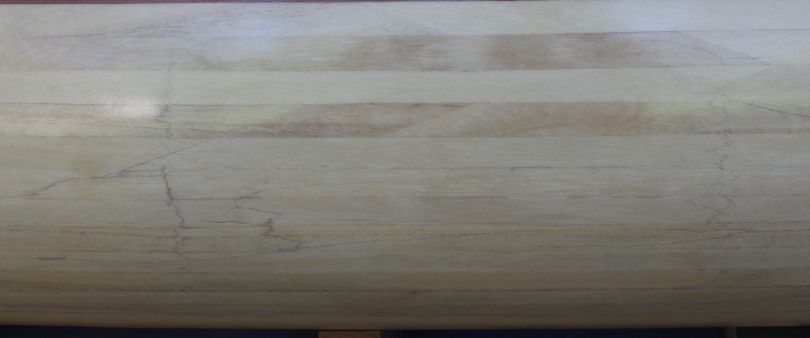
which left a bit of a flat spot:

so, a closer look at the rest:
front deck before and after sanding and sealing -
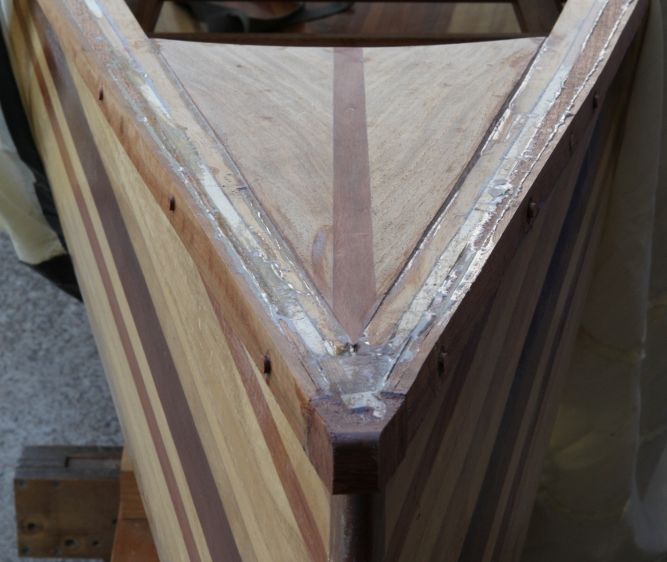
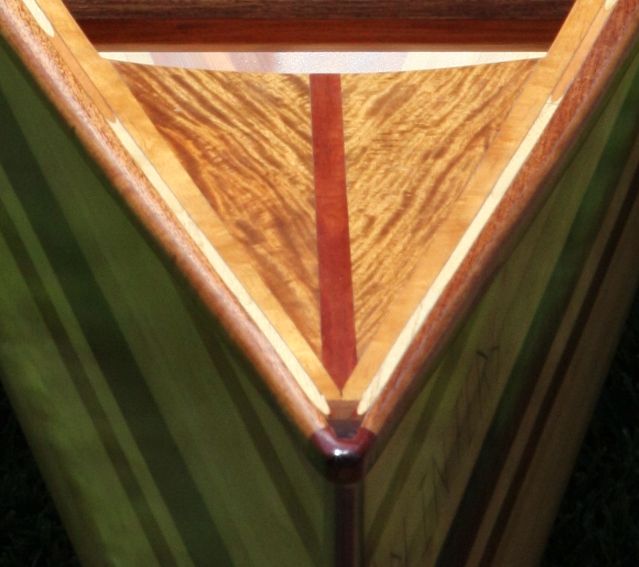
centre thwart:

seat frames (front/solo shown):

bulk head:
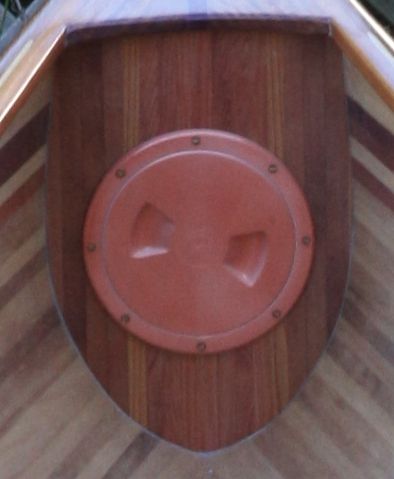
rear deck:
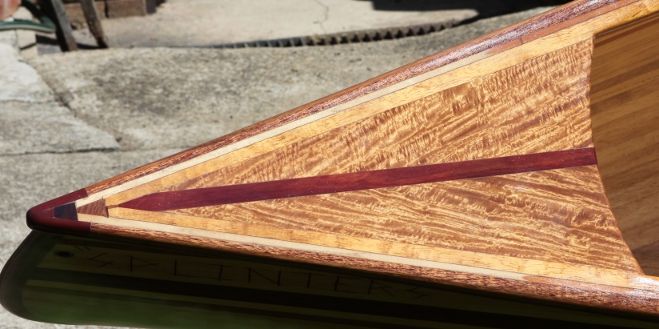
gunwale plugs and name:

gunwales:

painter holes:
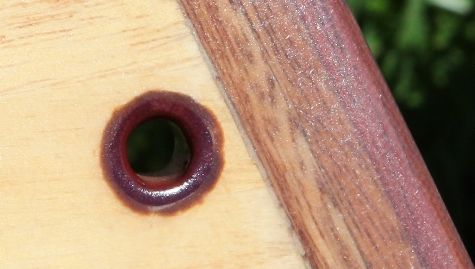
i have to thank all the people on the forum who have made suggestions along the way, and glen for the name.
splnters came in at just under 22kg, the imperial part of the scale read 48lb. there was a bit of robbing peter to pay paul in the weight games. the choice of hull material, using 4oz glass and hollow seat frames to make up for an extra layer in the football aria on the outside and hardwoods for the trim.
since i'm not a wood worker, i couldn't rely on fancy carpentry, or even tidy joinery to make it that little bit different. what i could do was take advantage of location and use a choice of timbers which others here wouldn't think to use or couldn't easily get. so, as a final for this post, here's a list of the cast that came together in this little boat:
paulownia (kiri)(probably paulownia tomentosa) - used as the primary timber of the hull. it's a hardwood, but lighter than wrc only slightly harder than balsa. plantation grown in oz.
western red cedar (wrc)(thuja plicata) - hull and bulk heads. i think probably one of the more common timbers people here are familiar with for their hulls. an american import.
tasmanian oak, also known as victorian ash and mountain ash. species unknown, could be any one of a number of eucalypt species. used on inner stems and centre thwart. a hardwood, it has properties similar to cherry, maybe a little weaker and a little lighter. an australian native.
spotted gum (corymbia maculata) - outer stems, some screw plugs, lamination on outwale. as hardwoods go, there arn't many harder. this stuff is apocalypticaly tough. that comes at the price of density, over a metric ton/cubic metre. an australian native
merbau (kwila)(intsia bijuga) - outer stems, some screw plugs. another fairly tough hardwood. figured the dark brown would contrast well with the pale hull. also quite a heavy timber. there are a lot of sites claiming that as a rainforest timber it should not be used, but as far as i know mine was sourced from plantation timber.
red iron bark (eucalyptus sideroxylon) - centre thwart, outwale ends, outwale screw plugs, decks, seat frame supports. similar properties to spotted gum, only tougher. a neighbour tried to run some palings through his thicknesser to dress them, and it refused to. this toughness is why i used it for the painters holes. it strengthens up the centre thwart and goes well with the wrc. an australian native.
naingon (heritiera utilis) - seat frames, outwales. supposed to have similar physical properties to black cherry, it's weight turned out to be more like that of american ash. smells like flea collars when sawn. still that chocolate brown works well with the lighter colours of the hull. a west african hardwood.
new guinea rosewood (pterocarpus indicus) - seat frames, inwales, decks. similar physical properties to black cherry. a hardwood. whilst some heartwood is pink, mine wasn't. when planing this timber, the shavings smelled like rose oil. i had 2 planks. one has slightly less dense and had a nice figure, and one with fairly strait grain and more dense. the strait grained plank was used to the inwales and seat frame, while the other plank was used for the decks. this timber really added a touch of elegance and old time feel to the canoe. interestingly enough in vanuatu, this timber is still the preferred timber for making traditional outrigger dugout canoes. source unknown, grows throughout south east asia.
american cherry (black cherry) (prunus serotina) - seat frame supports, seat frame spacers. a hardwood that most of you are probably familiar. here it's an exotic timber and like the naingon and new guinea rosewood had to be ordered in. compared to some of the other timbers used, this one was a bit boring to work with. american import.
well that's all for now. i'll probably to a final post once i get it in the water and see how it goes.